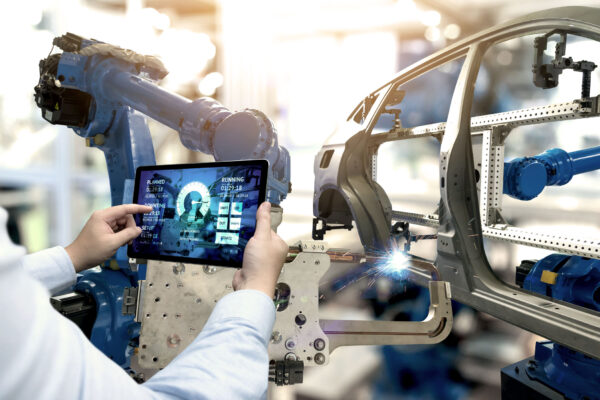We’re on the fast track to fully connected and automated vehicles. Consumers are no longer tolerating the standard non-connected car in which information is stored locally. This information dies where it stays because that car does not interact with any server that can utilize the data. For example, standard car users are missing out on:
- Updating maps automatically
- Choosing the best route
- Adjusting internal climate based on weather conditions
- Analyzing engine efficiency
- Updating music playlists
Thankfully, OEMs have been using big data for a while. They’ve been designing and building custom automotive solutions to advance customer experience and leverage competitive advantages. When all the data is organized and used properly, it allows for improvements in the quality of vehicles, such as making them safer, enriching driving experiences, and increasing the level of service.
Where Does All the Data Come From?
For OEMs, the primary source of data is the connected vehicle, but it doesn’t stop there. Secondarily, most consumers will have their other devices connected to their vehicles, such as to use as a mobile car key or link to their infotainment. Further, almost every road has stoplights, occasional construction sites, and different kinds of infrastructure that can be a source of data for passing vehicles. Not to mention, buildings and other infrastructure being upgraded with connectivity provide valuable data for both OEMs and consumers in helping them lead better, safer, and ultimately more productive lives.
How Should Connected Data Be Used?
OEMs have a huge task ahead of them when it comes to prioritizing the mass amounts of data coming from connected vehicles, devices, and infrastructure. The best approach is to focus on data that makes the largest impact for their business and their customers. For example, this data could lead to better-organized traffic flows if connected vehicles communicate well with each other and the environment they are driving in. This data can also recommend the best areas for rest stops, and in places of high accident concentration, more stoplights and other traffic interventions.
Ultimately roads can become safer and more effective. The data will be constant so that infrastructure can adapt to the new information, and everything will be working together from vehicles, drivers, and infrastructure. At the same time, this means that OEMs must prepare a solid foundation for this intake of data.
What Can Connected Data Do for Consumers?
For the consumer automotive market, big data can help drivers understand when their vehicles need repair or attention. Maintenance alerts include – but are not limited to – tire pressure, oil changes, and brake fluids that need to be checked. At the same time, that data can inform the OEM and even the dealership, allowing them to reach out as well and strengthen their relationship with the customer. Imagine reaching out to the customer to remind them to make an appointment around the same time that they’d be looking for an oil change?
What Can Connected Data Do for Automotive Insurance and Finance?
Big data can do more than alert consumers and companies about existing issues – it can also predict issues and encourage proactive approaches to maintenance. This kind of data is of special importance to insurance and captive finance companies. Not only will they be able to use data to predict the behavior of the driver and better assess qualification for loans, but also monitor driver safety and financial standing over time. For consumers, this will result in better discounts, quicker and more accurate financing approvals, and better customer experiences.
What Can Connected Data Do for Business Fleets?
Further, big data in fleet management is likely to become a huge benefit for businesses. Almost all OEMs have vehicles used for different tasks, and they all need to be controlled and coordinated somehow. It is much easier with a small number of vehicles, but what if there are hundreds or thousands of them? Fleet operations, whether it be passenger vehicles, commercial trucking, or heavy equipment, can benefit tremendously from opportunities to leverage big data for better operator and business outcomes.
These opportunities include, but are not limited to, tracking the location of fleet vehicles, predicting maintenance needs, and managing driver behavior.
Looking Forward to Big Data Advancements
Data science has influenced each aspect of the automotive industry, and there are even more technologies and advancements that spring from it. Machine learning and AI are used in automotive loans, product development, and predictive analysis for OEMs and dealerships, and data-driven credit scoring helps lenders evaluate borrower risk and make more sophisticated decisions. Big data is what will unite the technology to the business outcomes and drive unique customer experiences.
At Perficient, we have a team of the best data experts in the industry who create solutions for over 150 transportation and mobility companies in this new world of big data and analytics. We have hundreds of use cases and solutions for harnessing this data to accelerate your business outcomes. We even have a Connected Vehicles Strategic Position that lays the foundation for OEMs as they tackle these need challenges.
Accelerate your big data strategy with Perficient’s automotive expertise.

